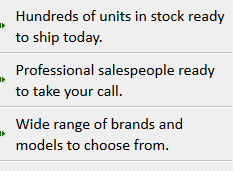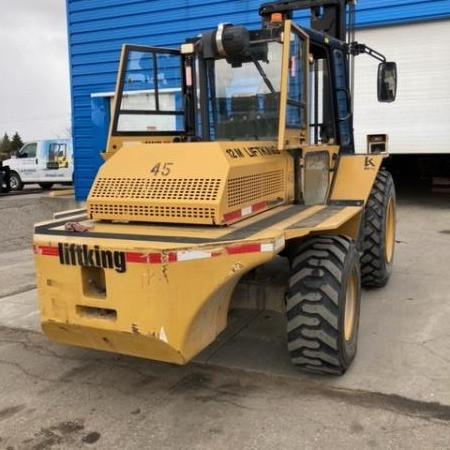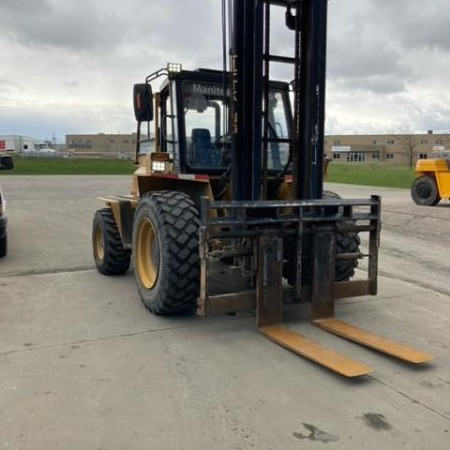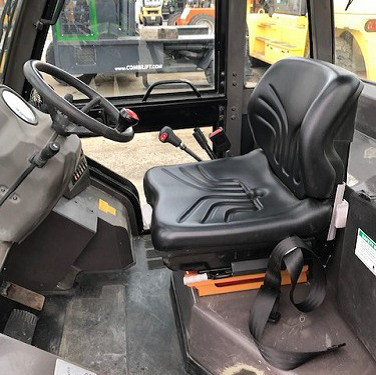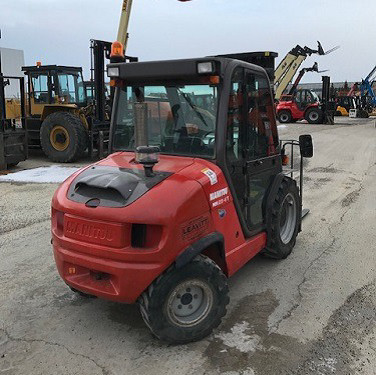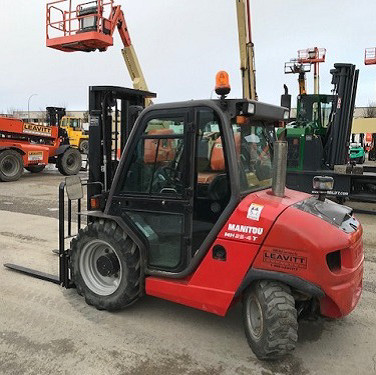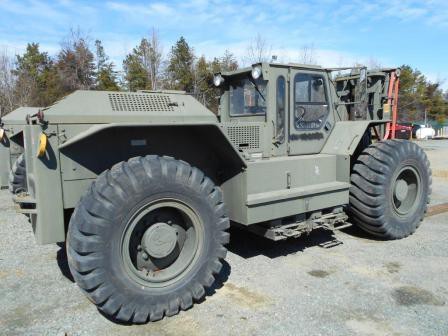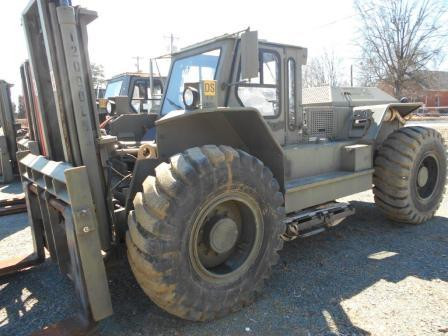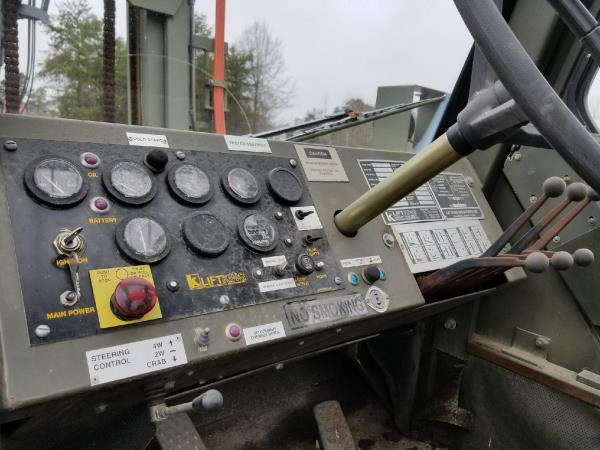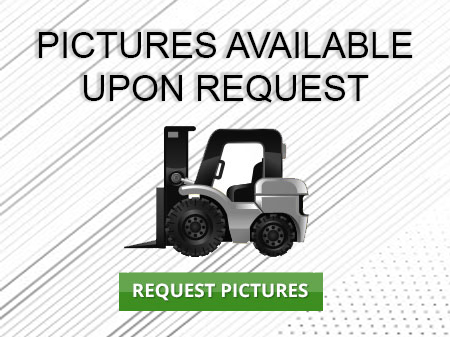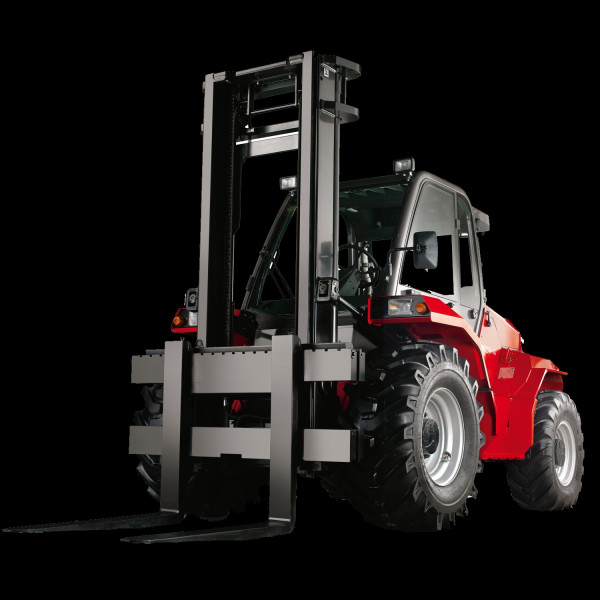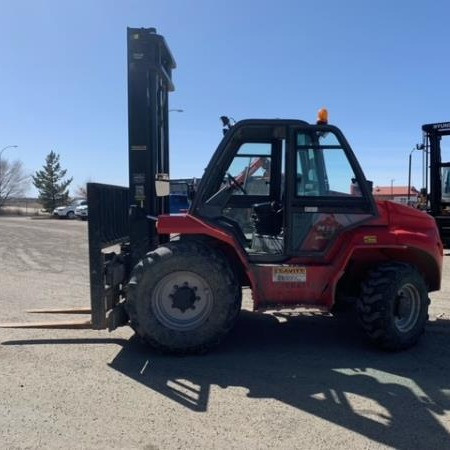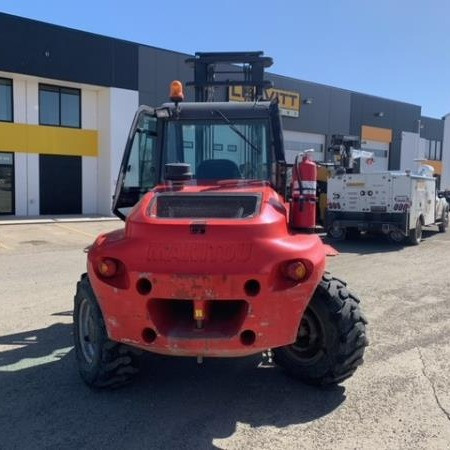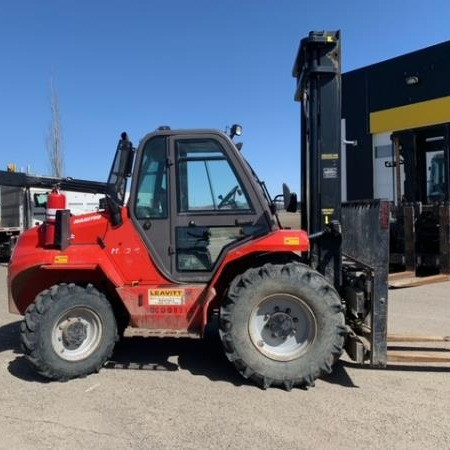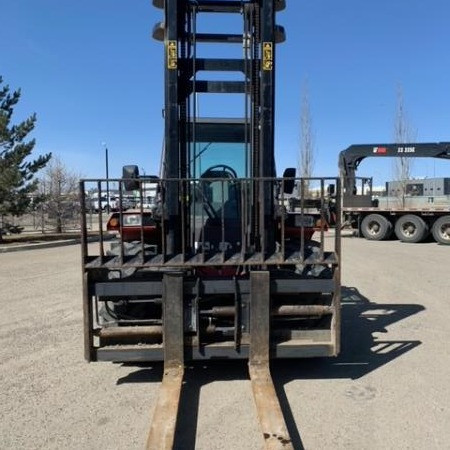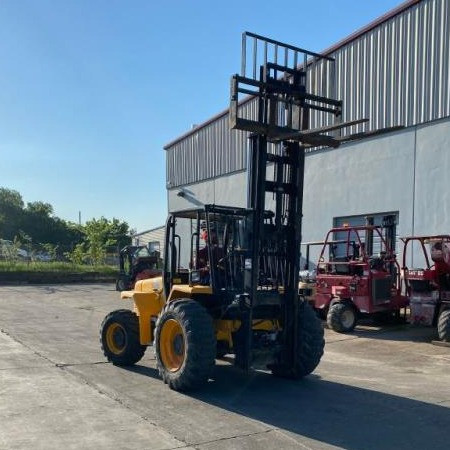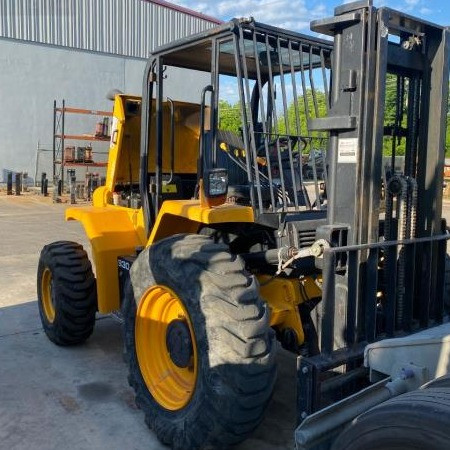Rough Terrain Forklift Chula Vista
Used Rough Terrain Forklift Chula Vista - Forklifts rely on two forks to unload, load and transport items. The rough terrain forklift and the industrial forklift are the two main types of forklift trucks.
Industrial forklifts are mainly used in loading docks and warehouse applications with smooth and level surfaces. Rough terrain forklifts are better suited for rocky environments and uneven surfaces. Due to size, tires, and weight capacity, a rough terrain lift is primarily used outdoors, often at construction sites. The tire type is one of the key differences between rough terrain and industrial forklift units. Common road tires, cushion tires are the main kind found on industrial forklifts. Pneumatic tires are utilized by rough terrain models. They are similar to tractor tires that offer more traction and flotation. Industrial forklifts are commonly powered by internal combustion engines although a fuel cell or battery electrical source may be used. Internal combustion engines are mainly used by rough terrain units.
Types of Class 7 Rough Terrain Forklift Trucks
There are three main types of Class 7 Rough Terrain Forklift Trucks:
1. Straight mast forklifts;
2. Telehandler forklifts; and
3. Rotating telehandler forklifts.
Regardless of its type, all rough terrain forklift trucks are designed to handle, as their name suggests, natural rough terrain and disturbed rough terrain typical of construction and military sites. A rough terrain forklift also offers increased maneuverability and performance. Additional consideration needs to be given for rough terrain forklift options while raising loads in difficult conditions in order to stay safe from tipping over. For safety reasons, it is vital the forklift maintains stability before moving, lifting or lowering. Stability of ground and knowledge of proper lifting technique is essential for safe operation of rough terrain forklifts.
Straight Mast Forklifts
Straight mast forklifts are designed to transport building materials around a range of rough terrain sites such as demolition and construction sites. Pneumatic cushion tires allow this forklift better maneuverability and accessibility around difficult terrain. Pneumatic tires allow the machine to successfully traverse difficult terrain. It is common for straight mast forklifts to come with 2-wheel or 4-wheel drive. The majority of straight mast forklifts rely on propane or diesel fuel to equip them for interior short-term jobs. However, these machines are best suited for outside jobs. Straight mast forklifts have a similar lift capacity compared to standard forklift models; ranging from 5K to 36K lbs.
Telehandler or Telescopic Handler Forklifts
Telescopic handler forklifts or telehandlers feature a telescoping boom; hence their name. This specially designed boom allows the forklift truck to pick up loads and place them at differing heights in front of the unit. The reachability of the forklift provides the operator with greater flexibility when placing a load.
Standard telehandler forklift units are long and low. They are designed with two wheels located at the front of the forklift with a different pair of wheels found close to the end of the unit. A telescopic boom is mounted at the rear of the forklift on a pivot that is fixed several feet higher than the forklift frame. The hydraulic fluid tank and fuel tank are mounted on the opposite side of the cab which is usually situated on the left side of the forklift. Within the frame itself, the transmission and engine are located along the center-line of the forklift. This common configuration allows for a balanced forklift which is necessary for the basic stability of the machine which lifting, transporting and lowering loads.
Telehandler units offer significantly higher lifting heights compared to standard units. Otherwise known as high-reach telehandlers or compact telehandlers, these models perform. Compact telehandlers can extend their full load capacity from eight-teen feet and the high-reach models to fifty-six feet. The load capacities of these machines range from five thousand pounds to twelve thousand pounds.
All-terrain forklifts rely on all-wheel steering to deliver better maneuverability and stability. Thanks to steering features including power-shift transmission, the operator can maneuver the machine in excellent proximity to the work location.
More recently, Telehandler forklift models have included additional features that incorporate the latest in ergonomics. These features include tilted steering options and roomier cabs to increase operator comfort. High in demand at job sites, these ergonomic options reduce operator fatigue and repetitive stress injuries.
A single joystick is a common design for most telehandlers. The joystick controls all the forklift’s boom functions as well as the hydraulic system which allows for straightforward and efficient operation.
Non-marking tires are a feature that telehandler forklifts can benefit from by allowing these units to be utilized for maintenance on billboards and signs and on stadiums and buildings.
Rotating Telehandler or Roto Telescopic Handler Forklifts
Rotating telehandler or roto telescopic handler forklifts have many features in common with the standard telehandler forklift. These include the rotating telehandler’s ability to lift heavy weight to great heights. However, these forklifts have the added ability to rotate the forklift on a turntable. Rotating the forklift a complete three-hundred-and-sixty degrees creates a larger working location without the need of repositioning the forklift.
Because of this additional feature, rotating telehandlers often have a second joystick to allow operation of the rotation function apart from the lift function. Power-assist steering minimized slip differential on the rear axle for additional traction and four-wheel drive are some of the extra features offered on rotating telehandlers and standard telehandler models.
Any machine with rotation capabilities will have additional safety measures to consider. Because of this, rotating telehandler rough terrain forklifts come with stabilizers to increase the safety when rotating loads from one side of the forklift to the other. Some rotating telehandlers do not have stabilizers. These units are created to move and work in various aspects of the job site and are easier to reposition without stabilizers.
Rotator telehandlers are usually smaller than their fixed cab counterparts, the standard telehandler. Understandably, rotator telehandler machines can handler smaller load capacities compared to their standard telehandler counterparts. Load capacities for rotating telehandlers usually range between 4,000 and 10,000 pounds, with lift heights ranging from 15 to 80 feet.
Both telehandlers and rotator telehandlers can be used as a crane when fitted with a winch attachment. These forklift attachments can save time and money by preventing a separate crane rental to be required.
Advancements for Rough Terrain Forklifts
Many attachments are currently available for rough terrain forklifts, such as booms, winches, rotating fork carriages and articulating booms. Forklift attachments are vital for diversifying the machine. They will continue to be developed for years to come.
Most of the proposed advancements will consist of included safety features within the rough terrain forklifts. Some new safety features have already been developed such as automatic load restriction devices. These systems automatically weigh a load and then calculate the safe reach distance of that load, taking into consideration the angle and extension of the boom. An alarm will go off once the safe distance is reached. This alerts the operator that immediate adjustments need to be made to the boom angle, reach distance or load weight.
Rough Terrain Forklift PDF
Stock Number: 209058 GL
Make: LIFTKING
Model: LK12M42
Year: 2015
| Stock Number |
209058 GL |
| Make |
LIFTKING |
| Model |
LK12M42 |
| Year |
2015 |
| Category |
Rough Terrain Forklift |
Stock Number: DP-MAN008 GL
Make: MANITOU
Model: MH25-4T
Year: 2016
Price: $58,500
| Stock Number |
DP-MAN008 GL |
| Make |
MANITOU |
| Model |
MH25-4T |
| Year |
2016 |
| Category |
Rough Terrain Forklift |
Stock Number: 267846 GL
Make: Liftking
Model: LK12000
Year: 2003
Price: $60,000
| Stock Number |
267846 GL |
| Make |
Liftking |
| Model |
LK12000 |
| Year |
2003 |
| Category |
Rough Terrain Forklift |
Stock Number: 208325 GL
Make: MANITOU
Model: M50.4
Year: 2015
| Stock Number |
208325 GL |
| Make |
MANITOU |
| Model |
M50.4 |
| Year |
2015 |
| Category |
Rough Terrain Forklift |
Stock Number: EQC008213 GL
Make: MANITOU
Model: M50
Year: 2017
| Stock Number |
EQC008213 GL |
| Make |
MANITOU |
| Model |
M50 |
| Year |
2017 |
| Category |
Rough Terrain Forklift |
Stock Number: LS15257 GL
Make: JCB
Model: 930
Year: 2013
| Stock Number |
LS15257 GL |
| Make |
JCB |
| Model |
930 |
| Year |
2013 |
| Category |
Rough Terrain Forklift |
